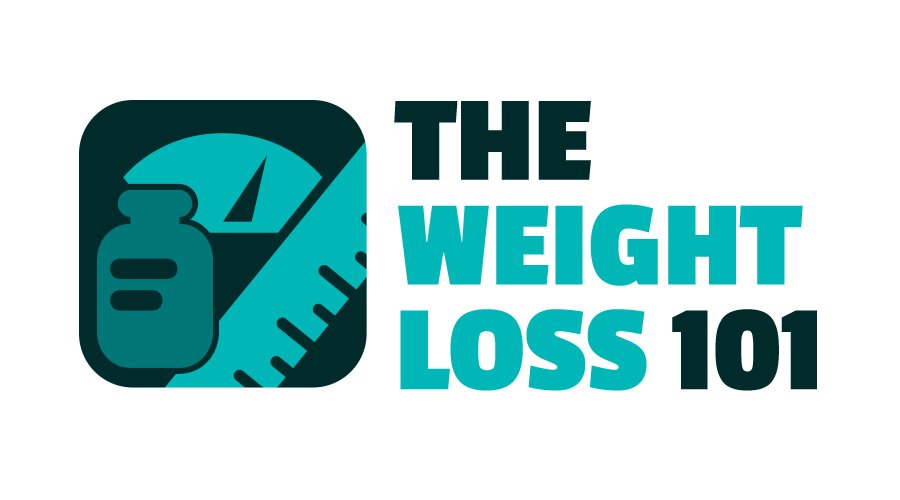The United States is currently facing an alarming epidemic of overweight and obesity, with one-third of adults and 17% of children being obese. This widespread health condition not only poses significant risks to individual well-being but also exerts a tremendous economic burden on society. In order to address this pressing issue and prevent further escalation of the obesity epidemic, it is crucial to implement effective measures and strategies for obesity prevention.
Accelerating progress in obesity prevention requires a comprehensive approach that encompasses both individual and societal levels. It involves promoting healthy lifestyles, tackling the root causes of the obesity epidemic, and preventing obesity-related diseases. By implementing interventions for obesity prevention and fostering effective weight management, we can create a positive impact on the health and well-being of our communities (check out my post on effective weight management here).
Community health initiatives and obesity prevention programs play a vital role in raising awareness, providing resources, and empowering individuals to make healthier choices. These initiatives aim to create an environment that supports and encourages individuals to engage in physical activity, make healthier food choices, and adopt sustainable lifestyle habits.
Key Takeaways:
- Obesity prevention measures are essential in addressing the obesity epidemic in the United States.
- Effective weight management and interventions for obesity prevention can contribute to a healthier future.
- Promoting healthy lifestyles and preventing obesity-related diseases should be prioritized.
- Community health initiatives and obesity prevention programs play a crucial role in creating a supportive environment.
- A comprehensive approach that combines individual and societal efforts is necessary for successful obesity prevention.
The Urgent Need for Obesity Prevention
The obesity epidemic in the United States is a pressing issue that requires immediate attention. One-third of adults and 17% of children are currently obese, and the prevalence of obesity is even higher among ethnic minorities, low-income individuals, and rural populations. The economic costs of obesity-related illnesses are staggering, with an estimated annual cost of $190.2 billion in the United States. Given the significant health, social, and economic consequences of obesity, there is an urgent need to accelerate progress in obesity prevention.
I believe that tackling the obesity epidemic should be a top priority for our society. The current rates of obesity are alarming, and if we don’t take immediate action, the health and well-being of future generations will be at risk.
Obesity not only impacts individuals on a personal level but also affects our society as a whole. It is associated with a wide range of health conditions such as diabetes, heart disease, and certain types of cancer. These health conditions not only lead to increased healthcare costs but also decrease individuals’ quality of life. Additionally, the societal consequences of obesity, such as reduced work productivity and increased absenteeism, further highlight the urgent need to address this issue.
Obesity prevention efforts must be implemented at a societal level to effectively combat this epidemic. By focusing on prevention rather than treatment, we can prevent obesity-related diseases and improve overall population health. This requires a multifaceted approach that includes promoting healthy lifestyles, increasing access to nutritious foods, and creating environments that support physical activity.
Addressing the Health Condition
Obesity is not just a cosmetic concern; it is a serious health condition that requires immediate attention. Individuals who are obese are at a higher risk of developing chronic diseases and face numerous health challenges. By prioritizing obesity prevention, we can help individuals maintain a healthier weight and reduce their risk of obesity-related health conditions.
Preventing obesity is not just about losing weight; it’s about improving overall health and well-being. By promoting healthy habits and creating a supportive environment, we can empower individuals to make healthier choices and reduce their risk of obesity.
Achieving success in obesity prevention requires a comprehensive approach that involves individuals, communities, healthcare providers, and policymakers. By working together, we can create a society that supports and promotes healthy lifestyles.
| Impact of Obesity | Action Needed |
|---|---|
| Increased healthcare costs | Implement prevention strategies to reduce the burden of obesity-related diseases |
| Reduced quality of life | Promote healthy behaviors and provide support for individuals to maintain a healthy weight |
| Decreased work productivity | Create workplace wellness programs and supportive environments for healthy eating and physical activity |
Quotes from Experts
“The obesity epidemic is a critical public health issue that requires urgent action. It is essential to address the root causes of obesity and implement effective prevention strategies at both the individual and societal levels.” – Dr (check out my post on causes of obesity here). Emily Thompson, Public Health Specialist
“Obesity prevention is not just about aesthetics; it is about improving the overall health and well-being of individuals and communities. By prioritizing prevention efforts, we can create a healthier future for generations to come.” – Prof. Michael Davis, Health Policy Expert
In conclusion, the urgent need for obesity prevention is evident, considering the alarming rates of obesity and the significant impact it has on individuals and society. By implementing comprehensive prevention strategies and promoting healthy lifestyles, we can work towards reducing the prevalence of obesity and improving the overall health condition of our population.
The Role of Obesity Prevention

In the fight against obesity, it is crucial to not only focus on individual behavior but also address the societal factors that contribute to this epidemic. Obesity prevention efforts should encompass both behavioral changes at the individual level and environmental changes at the societal level to effectively promote healthier lifestyles.
Recognizing the need for comprehensive action, it is widely acknowledged that changes must be made in the environments where people live and frequent. This includes creating spaces that facilitate physical activity and increasing access to affordable healthy foods.
By promoting positive influences and reducing negative influences, we can create an environment that supports healthy choices. Positive influences can be fostered through initiatives that provide safe physical activity spaces, such as community parks and playgrounds. Similarly, efforts to increase access to affordable healthy foods can be instrumental in influencing food choices and promoting better nutrition.
“The food you eat can be either the safest and most powerful form of medicine or the slowest form of poison.” – Ann Wigmore
Negative influences, on the other hand, should be minimized to curb unhealthy behaviors. One major negative influence is the marketing of unhealthy foods and beverages, which can promote overconsumption of calorie-dense, nutritionally-poor options. By implementing policies that restrict the advertising and promotion of such products, we can help reduce their impact on individuals’ food choices.
The role of obesity prevention is not limited to individual behavior change. It extends to creating an environment that supports and encourages healthy choices. By combining individual efforts with societal changes, we can create a society where obesity is less prevalent and promote better overall health.
The Committee’s Recommendations for Obesity Prevention
The Committee on Accelerating Progress in Obesity Prevention has carefully formulated a set of recommendations to guide our collective efforts in combating obesity. Our recommendations are grounded in a systems approach, recognizing that addressing the complex nature of the obesity problem requires a comprehensive strategy. By implementing a range of strategies and actions, we can make significant progress in obesity prevention.
The committee’s recommendations include:
-
Improving access to and opportunities for physical activity: We recommend creating safe and accessible spaces for physical activity. This could involve building more parks, bike lanes, and pedestrian-friendly environments. Additionally, we encourage the incorporation of physical activity promotion into community programs and initiatives.
-
Reducing the availability of unhealthy food and beverages and increasing access to healthier options: We advocate for policies that limit the marketing and availability of unhealthy foods and sugary beverages. This can be achieved through measures such as implementing taxes on sugary drinks and increasing the availability and affordability of nutritious foods in disadvantaged communities.
-
Changing the messages surrounding physical activity and food consumption: We recommend adopting a positive and empowering approach to messaging about physical activity and food choices. By promoting the benefits of an active lifestyle and healthy eating, we can inspire individuals to make positive changes. Furthermore, we urge the reduction of advertisements for unhealthy foods targeted at children.
-
Incorporating obesity prevention into healthcare and workplace settings: We encourage healthcare providers to integrate obesity prevention into routine patient care. This can involve proactive screening, counseling on healthy behaviors, and referral to specialized programs when necessary. Similarly, workplaces should prioritize employee well-being by offering health promotion programs, supportive environments, and access to healthy food options.
-
Making schools a focal point for obesity prevention efforts: We believe schools play a crucial role in promoting healthy behaviors and creating an environment that supports obesity prevention. We recommend implementing comprehensive wellness policies that encompass nutrition education, physical education, and the provision of healthy meals and snacks. Furthermore, schools should limit the marketing of unhealthy foods and beverages on campus.
By implementing these recommendations, we can begin to address the root causes of obesity on both individual and societal levels. It is our belief that a comprehensive and multi-faceted approach will yield the greatest results in obesity prevention.
The Importance of a Comprehensive Approach to Obesity Prevention

Addressing the issue of obesity requires a comprehensive approach that encompasses various aspects of society. While individual solutions can play a role in obesity prevention, they are not sufficient on their own. The societal impact of obesity necessitates the implementation of multi-faceted strategies that target different environments and settings.
To effectively tackle obesity, we need to bring about changes in physical activity environments, food and beverage environments, message environments, healthcare and workplace settings, and schools. By taking a comprehensive approach, we can create an environment that promotes healthy choices and discourages unhealthy behaviors.
A comprehensive approach to obesity prevention recognizes that there is no one-size-fits-all solution. Different individuals and communities face unique challenges and circumstances when it comes to obesity. Therefore, individual solutions must be combined with societal strategies to address the complex and diverse factors contributing to obesity.
The Role of Multi-Faceted Strategies
Multi-faceted strategies involve implementing a range of interventions that work together to address the societal impact of obesity. These strategies may include:
- Improving access to affordable healthy foods
- Promoting physical activity through the development of safe and accessible spaces
- Reducing the marketing and availability of unhealthy foods and beverages
- Creating supportive environments in schools that prioritize healthy eating and physical activity
- Changing societal norms through positive messaging about healthy lifestyles
By adopting a multi-faceted approach, we can create a supportive environment that empowers individuals to make healthier choices and prevent obesity.
“A comprehensive approach to obesity prevention recognizes that there is no one-size-fits-all solution.”
We must also ensure that these strategies are tailored to the specific needs of different populations and communities. By incorporating an equity lens into our obesity prevention efforts, we can address the underlying social determinants of health that contribute to obesity disparities.
Implementing a comprehensive approach to obesity prevention requires collaboration among various stakeholders, including government agencies, healthcare providers, schools, community organizations, and individuals themselves. By working together, we can pool our resources, expertise, and influence to create lasting change.
The Societal Impact
Obesity is not just an individual health concern but also has a significant societal impact. It affects not only the health and well-being of individuals but also puts a strain on healthcare systems, the economy, and overall community well-being.
By implementing a comprehensive approach to obesity prevention, we can mitigate the negative societal consequences of obesity. This includes reducing healthcare costs related to obesity-related diseases, improving productivity in the workplace, and fostering a healthier and more vibrant community.
Ultimately, a comprehensive approach to obesity prevention is essential for creating sustainable, long-term change. By combining individual solutions with multi-faceted strategies, we can address the complex nature of obesity and work towards a healthier future for all.
Assessing the Current Situation of Obesity

Understanding the current situation of obesity is crucial for effective prevention efforts. The prevalence of obesity in the United States has reached epidemic levels, with one-third of adults now being obese. This alarming statistic highlights the urgent need for action to address the obesity epidemic and its detrimental impact on public health.
Contributory trends have played a significant role in driving the obesity epidemic. Factors such as the lack of access to physical activity spaces and affordable healthy foods have contributed to the rise in obesity prevalence. These environmental barriers make it challenging for individuals to engage in regular physical activity and maintain a nutritious diet.
While progress has been made in raising awareness about obesity and implementing prevention programs, there is still much work to be done. Efforts to combat obesity require better measurement of outcomes to assess the effectiveness of these initiatives. By accurately measuring outcomes, we can identify successful strategies and make data-driven decisions to further accelerate progress in obesity prevention.
Measurement of outcomes provides valuable insights into the impact of obesity prevention efforts, allowing us to gauge the effectiveness of various interventions and tailor our approach accordingly. It also helps in identifying gaps and areas where additional focus is needed.
A data-driven approach to obesity prevention allows us to evaluate the success of different strategies and make informed decisions for future initiatives. By understanding the contributory trends and continuously measuring outcomes, we can adapt and refine prevention efforts to reduce obesity prevalence and improve the overall health of our communities.
Key Points:
- Obesity prevalence in the United States is at epidemic levels, with one-third of adults being obese.
- Lack of access to physical activity spaces and affordable healthy foods contribute to the obesity epidemic.
- Measuring outcomes is crucial for assessing the effectiveness of obesity prevention efforts.
- Data-driven decisions based on outcomes measurement can drive progress in obesity prevention.
Goals, Targets, and Strategies for Obesity Prevention
Setting clear goals, targets, and strategies is crucial for effective obesity prevention. The goals of obesity prevention should include decreasing the prevalence of overweight and obesity among both children and adults, as well as supporting healthy weight maintenance among adults. Targeting behavioral and environmental changes is essential to guide prevention efforts and make a significant impact.
A comprehensive approach is necessary to address the complex nature of obesity. This approach should encompass changes in physical activity environments, food and beverage environments, message environments, healthcare and workplace settings, and schools. By adopting a comprehensive approach, obesity prevention strategies can provide a holistic and multi-faceted solution to combat the obesity epidemic (check out my post on obesity prevention strategies here).
It is essential to track the progress made in obesity prevention to assess the effectiveness of the strategies and actions implemented. Regular monitoring and evaluation allow for adjustments and the identification of areas that require additional intervention. Tracking progress ensures that efforts are targeted and aligned with the goals of obesity prevention.
By setting clear goals, establishing targets, and implementing a comprehensive approach with effective strategies, progress in obesity prevention can be achieved. Tracking the progress made in obesity prevention allows for continuous improvement and ensures that efforts stay on track to create a healthier future.
Implementing Recommendations for Obesity Prevention

Implementing the recommendations for obesity prevention requires a systems perspective, where various stakeholders work together to drive change. It is essential to approach the implementation of these measures strategically, considering the interdependencies and interconnectedness of different aspects of society.
Leadership plays a critical role in mobilizing efforts and ensuring the effective implementation of strategies and actions. A strong and visionary leader can inspire and motivate stakeholders, fostering a collective commitment to obesity prevention. By providing guidance and direction, leaders can navigate the complexities of the implementation process and overcome obstacles that may arise.
Responsibility must be defined and allocated among different individuals, organizations, and agencies involved in obesity prevention. Establishing clear roles and responsibilities ensures accountability and effective coordination. Collaboration and communication between stakeholders are vital to ensure that everyone understands their responsibilities and works towards the common goal of obesity prevention.
Regular assessment of progress is necessary to evaluate the impact of implemented measures and make necessary adjustments. By monitoring key indicators and collecting relevant data, it becomes possible to assess the effectiveness of obesity prevention efforts. Assessment also allows for the identification of areas that require further improvement or modification.
“The only way to make progress is to start implementing the necessary changes. Without action, all the recommendations and strategies remain mere words.” – Dr. Amanda Lawrence, Obesity Prevention Expert
Taking a comprehensive and collaborative approach is crucial for success in obesity prevention. By implementing the recommendations from a systems perspective, exercising strong leadership, defining and allocating responsibilities, and continuously assessing progress, we can accelerate the fight against obesity and achieve a healthier future for generations to come.
| Key Steps towards Implementation | Responsibilities |
|---|---|
| 1. Develop an implementation plan | Designated implementation team |
| 2. Establish clear roles and responsibilities | Leadership and stakeholders |
| 3. Mobilize necessary resources | Funding agencies and relevant organizations |
| 4. Communicate and engage with stakeholders | Implementation team and community partners |
| 5. Implement strategies and actions | Various stakeholders involved in obesity prevention |
| 6. Monitor and evaluate progress | Evaluation team and data analysts |
| 7. Make necessary adjustments | Leadership and implementation team |
Conclusion
Accelerating progress in obesity prevention is crucial for achieving a healthier future. By implementing the recommendations and strategies outlined by the Committee on Accelerating Progress in Obesity Prevention, significant strides can be made in tackling the obesity epidemic.
The combination of individual behavioral changes and societal environmental changes will contribute to preventing obesity-related diseases and promoting healthier lifestyles. It is important for individuals to adopt healthy habits, such as regular physical activity and a balanced diet, while also creating an environment that supports and encourages these behaviors.
With a comprehensive and collaborative approach involving individuals, communities, healthcare providers, schools, and policymakers, success in obesity prevention is within reach. By working together to create policies, programs, and initiatives that prioritize obesity prevention, we can make a profound impact on the health and well-being of our society. Let’s accelerate progress in obesity prevention for a healthier future.




